Fire Emblem: The Sword of Seals Retrospective
By Hunter5024 2 Comments
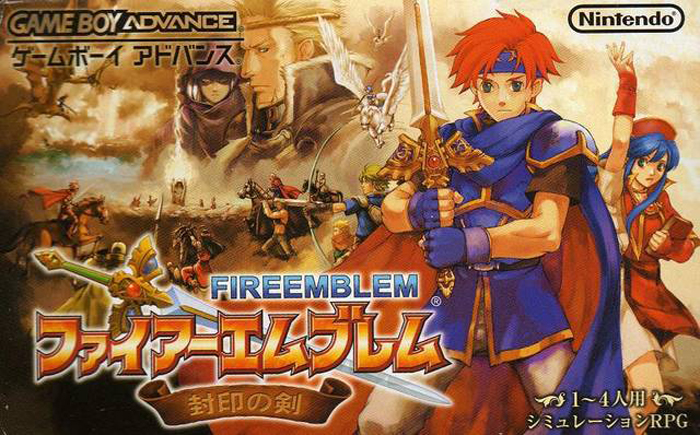
So in an effort to both force myself to write more often to improve my abilities, and to improve my knowledge of franchises that I am fond of, I've decided to do a series of retrospectives. The first series I thought of was Fire Emblem. A series which wasn't brought over here until it's seventh installment, that leaves 6 (not counting the first) games for me to delve into. I hear some pretty great things about the 4th entry, but I decided to try the game which would feel the most familiar to me. Fire Emblem The Sword of Seals (AKA Fuuin No Tsurugi) 6th entry in the series, and prequel to my favorite entry in the series. I've played this game once before, however the translation I used was incomplete, and I didn't get the true ending, so I was eager to jump back in and get a real playthrough to see how it stacks up against it's descendants.
Both game’s stories are deeply tied to the events of an ancient war that occurred millennia ago called The Scouring, a war between dragons and men for dominance of the planet. Whereas Blazing Sword focused on the human heroes of the conflict, this game chooses to focus on what happened to the dragons after they were driven back. Zephiel a king driven mad by the injustices he suffered at the hands of his own father begins a war across Elibe to pave the way for dragon rule. This opens up the story to have an epic dragon/human war not unlike The Scouring of old. Roy, the young lord of a small country caught in the crossfire, warned by Zephiel’s sister Guinevere decides that it is his duty to stop Zephiel’s plans from reaching fruition. While on paper this all sounds interesting enough, I don’t think the story ever really delivers on it’s promises. Sure the chapters where Guinevere explains her and Zephiel’s past are really tragic and sympathetic even, and the chapter where you learn about Idoun is interesting as well, but these are really the only highlights. It takes quite a long time (nearly the very end of the game), before Zephiel’s intentions really become clear to the player. Dragons don’t even show up for about a dozen chapters and even then they are just mindless beasts. Up until then it’s really just a standard military fantasy story about an evil invading kingdom and the good guys trying to push them back. In fact if you don’t meet the really annoying requirements to get the true ending the game is never anything more than this. It simply ends without ever elaborating on the events that have taken place.
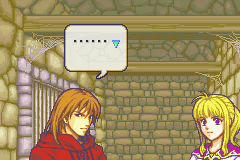
The real failing of the story in this game is not that it fails to do anything interesting with it’s premise, but that it’s major characters never manage to materialize any personality. You know that game where you see if someone can describe a character without referring to their looks or profession, and that’s how you can tell if they have any personality or not? I could sit here staring at my keyboard for ten minutes and still not think of a single quality to describe Roy, and if I did think of one it would probably be one shared by every other main character around. I blame a very basic Fire Emblem convention for this failing, the idea of the permanent death. This is intrinsic to the series, and were it to be taken away the games would lose basically any tension or investment they manage to build. Fire Emblem is like a game of chess, except when you’re moving that rook, and you know you’re putting it in danger, you care about whether or not that piece lives or dies because you know he’s got a dying wife at home and just wants to buy some medicine for her. This gives weight to every single move you make, it ratchets up the tension whenever your units are in danger, and it forces you to play smart, which is the most important thing that can be asked of you in a strategy game.
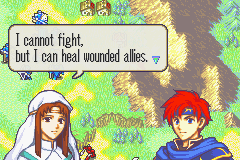
However the tension they are buying with permanent death is paid through the narrative. It becomes very difficult to tell a story when you never know whether or not the character you have delivering that line will live or die. And so the story in Fire Emblem 6 had to be compromised, told entirely through the interactions of Roy and Merlinus along with whatever NPC happens to be around at the time, or instead told through the dialogue of the villains when the main character will not suffice. With so few characters to play off of I can see where the complication in crafting an interesting story comes from. The game tries to make up for this through the support conversations, however it fails to do so because these conversations don’t really take the time to actually build anything meaningful, and so they rarely go beyond even the most shallow of interactions between characters, and when they do (except in a handful of conversations) it feels unearned. Later entries in the series fixed this, but that only serves to emphasize this particular entries weak story. Sadly by putting in place a mechanic designed to make me care about the characters, they have actually trivialized every one of them, so beyond any gameplay implications I don’t really care if any of them live or die.
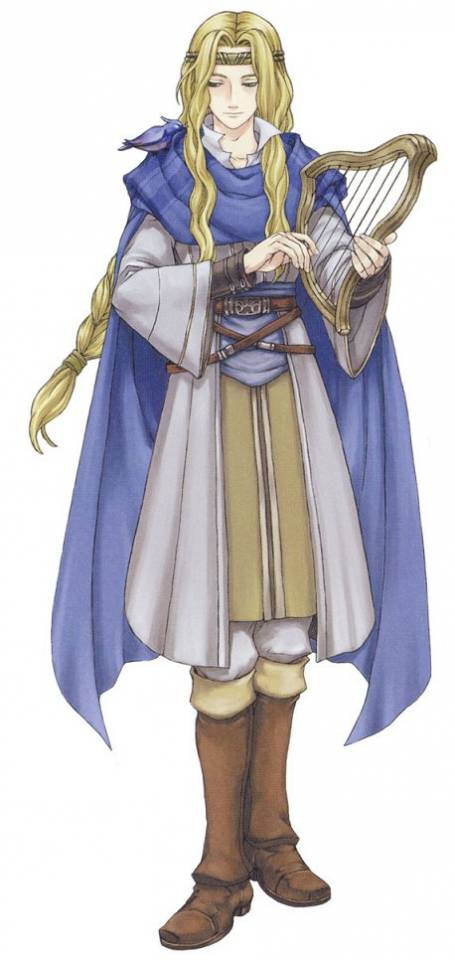
Oh and die they shall. Fire Emblem novice I am not, however the first thing I noticed when coming to this game off of the more recent Fire Emblem’s is the increased difficulty. Figuring I could blow through the first chapter in a matter of minutes, trained by the simplicity of early chapters in later Fire Emblems, I actually found myself biting off more than I could chew right from the get go and had to restart in the very first chapter. This was my fault, however it only gets more and more challenging from there. This game delights in throwing swarms of wyvern’s, ballistae, long range spells, and ridiculous staves at you throughout the game. I wanted to appreciate the difficulty but in the end all it managed to do was frustrate me, I’ve rarely had to restart a Fire Emblem as many times as in this game. I can appreciate a tough chapter every now and then, but without some more breezy moments to wind down the game eventually starts to feel more like work than fun. After beating the game I found that every chapter in the second half of the game took a little over an hour to beat, and I had to restart most of those chapters at least once because of an archer I didn't plan for or a hit that shouldn't have connected. Or both.
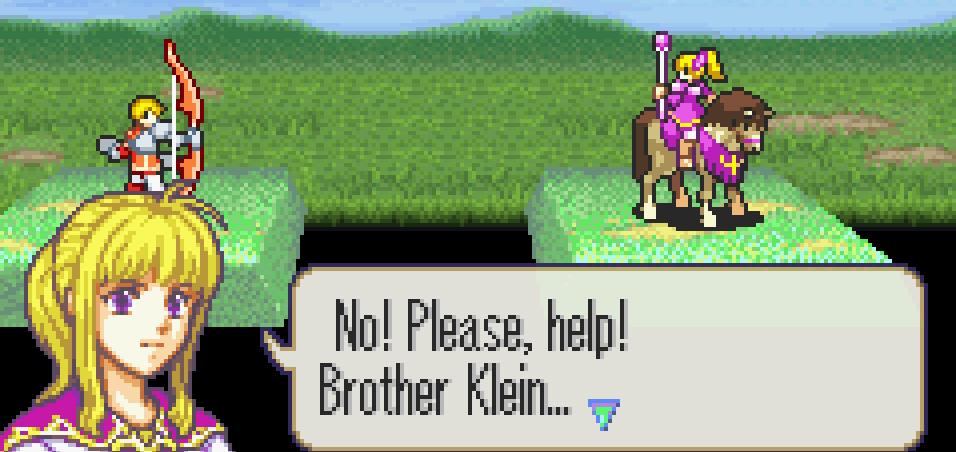
The difficulty wouldn’t be so much of a problem if the chapters had more of a unique identity to them, but because every chapter is “Seize the Throne” there just doesn’t feel like a whole lot of variety. It’s always a giant map that you’re inching your way along while avoiding bolts, and ballistae, while hoping those Wyvern’s don’t make there way to the back of your caravan. If the enemies don't change their tactics, than you don't have any reason to either, and so you'll find yourself using similar strategies in every encounter. Whereas in later entries in the series, Bolting’s, Ballistae, Berserk Staves and the like would only be featured in a handful of chapters to change the dynamic of the encounter, this time it feels like they are firing on all cylinders all the time.
So after playing through this game recently to get the true ending, I think I came out liking it a little less than I did the first time. The story was boring, only a select few characters were memorable, and the chapters end up feeling tedious. However I am coming at this from the perspective of someone who has already played better Fire Emblems. Were I looking at it from the lens of someone who had yet to experience them I think I would be willing to give this game a little more lenience. After all it’s still Fire Emblem, that same core Gameplay is intact and I’d be lying if I said I didn’t get the enjoyment I expected out of it.
From my current perspective here’s how I rank the Fire Emblems I have played thus far:
1. Blazing Sword
2. Radiant Dawn
3. Path of Radiance
4. Sacred Stones
5. Sword of Seals
6. Shadow Dragon
Notable Chapters:
Chapter 4: Collapse of The Alliance
This is an interesting chapter mostly because the next game in the series decided to rip it off and have you do it all over again. When playing through this map I was trying to determine what made this chapter so special that it deserved repeating, and I decided that it is basically a perfect example of Fire Emblem in microcosm. Enemy units to recruit, towns to visit, chokepoints, reinforcements, and a pretty tough boss. If I was giving a demo of Fire Emblem I’d use this chapter.
Chapter 7: The Rebellion of Ostia
A pretty perfect example of Fire Emblem 6. This game loves to throw everything it can at you and chapter’s like this with a trillion side objectives you need to get out of the way while still fighting off the enemy are exactly what I’m talking about when I say this game is unforgiving.
This is when I first started to notice this game’s relentless tactics. Ballistae to contend with, an open ocean just daring you to let your fliers out so they can be caught by tough enemy wyverns, then when you finally claw your way across the bridge they unleash a horde of Cavaliers to charge up your unprotected rear. A very fun chapter, but probably the one I had to reset the most. I think I probably enjoyed this one more than the others like it simply because it came first.
Desert chapters are always a pain in the ass, but this one in particular was just brutal. It’s a fog of war chapter where they delight in putting really powerful fliers just out of your line of sight. Because of their high movement, they can burst in on the enemy phase and mess you up without there being any method to plan for it. As with all desert chapters you’ll be preoccupied trying to wander around and collect the cool items, but there is a time limit on this chapter if you want the true ending. So with your impaired movement you are sort of forced to rush through in order to accomplish everything that needs to be done. There's a unit who abuses a sleep staff to try and get you caught in a bad situation, and before too long an entire army of brigands starts to pull up from the back. All of this adds up to one of the most frustrating chapters in the game, that I only got through because of trial and error. One example of when Fire Emblem 6 felt like work.
Chapter 16 Gaiden: The Pinnacle of Light
All of the Gaiden chapters come with some sort of gimmick to try and be unique, but all of them felt pretty easy to avoid, and thus inconsequential; except this chapter’s. Rays of light that could come from anywhere and automatically do ten damage to any unit in a straight line really makes you change up your tactics. Not only that but it’s an interesting looking chapter being at a golden tower in the clouds. The exception to my rule of no chapter variety in this game. It really is quite a shame that they bar entry to these chapters behind gates that are never explicitly explained to the player unless they look it up online.
Chapter 21: The Sword of Seals
I love those chapters in Fire Emblem’s where the challenge is contending with the ridiculous number of units you have to go up against rather than some kind of special gimmick. It’s tough Fire Emblem in the most pure way, and this chapter is the best example of that in this game. It doesn’t look like much at first but those reinforcements just keep pouring out, and you’d better hope you can deal with them fast enough to get to the boss in time to get the true ending.
Chapter 22: The Neverending Dream
If you don’t get the true ending, this is the last chapter in the game, and it feel’s like it. Not because it’s especially difficult, but it is an epic chapter, and choosing which units would be best used in which spot requires some serious strategic thought, especially with your underdeveloped main character. The battle with Zephiel is truly tough and suitably awesome.
Chapter 24: The Truth of The Legend
In a lot of ways this is the best concept for a chapter, and yet the most disappointing chapter in the game. It is the only chapter that delivers on the premise of a Dragon vs Human War, because literally the only enemies you fight are Dragons. However because there is only one kind of dragon enemy, and because the divine weapons (which are surely not broken yet, due to you being forced to keep them intact) rip dragons to shreds. This is a painfully easy chapter where you'll find all of your units are capable of killing the enemy with little to no problem. To add in a little difficulty they throw in the idea of conquering thrones to unlock each room, but that paired with the ease of slaying the dragons, and the very linear path you are forced to take through this chapter really only makes it feel like tedium, which requires no tactical thought. What this chapter (or really the entire game) could've used is a few extra kinds of dragon units to spice things up a bit. However this chapter does have a saving grace in the form of Idoun's back story which isn't exactly going to set the world on fire, but is interesting enough to finally hear after waiting the entire game to understand this mysterious figure.
Final Chapter: Beyond The Darkness
Every chapter before this took me about an hour, this one took me 3 minutes. Probably the worst chapter in the game, and it’s basically impossible to lose. A very anticlimactic and disappointing ending that manages to leave me feeling very unrewarded regardless of the games earlier difficulties.
Notable Units (Going by my copies translation):
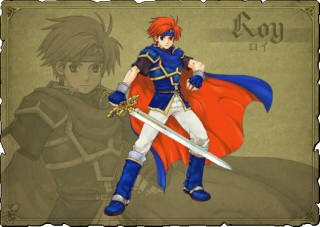
Roy: The lord of this game is easily my least favorite of all the lords I’ve played. His stats never get good, and he’s forced to wait until what could very easily be the last chapter to evolve, which is about half a game later than your earlier units. And by the time he does evolve, there's not enough experience left in the game to catch him up to the units your already using. Yet he’s forced to be an integral part of your chapter despite his shortcomings. If he had a more interesting personality I might accept him, but he doesn’t. A shame too, I thought he was so cool in Super Smash Bros Melee.
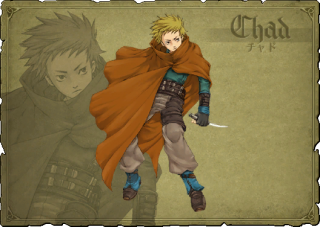
Chad: This looks like one of those shithead kids who would flip you off from the backseat of his car because he knows his parents won’t do anything about it. Therefore, he never got to have a place on my team.
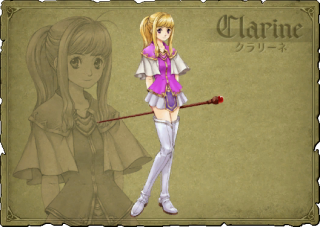
Clarine: The exception to my lack of personality rule. Being completely vapid, spoiled, and pompous, she’s the only character the writers seemed to have any fun with, and some of her supports were a delight to read. Not only that but a fun unit to use as well, with her ridiculous evasion.
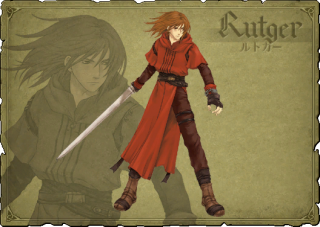
Rutger: This guy is fucking intense. His mixed heritage automatically gives him a more rich backstory then just about any of the other characters, and his constant violence and ruthlessness is kind of refreshing with all of the naivety being thrown around by this armies goodie goodies. This guy isn’t a soldier he’s a killer, and doesn’t pretend to be anything else.
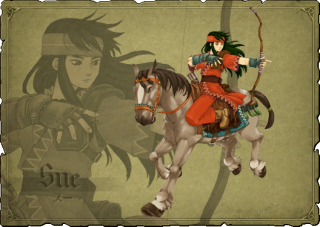
Sue: Possibly the daughter of Lyndis from Fire Emblem 7, that earns Sue about 12 points in my book. I think a lot of the personality I infer from these characters is really an assumption on my part, but Sue’s quiet nature was always pretty interesting, though maybe this was just because she had very few lines. This game makes me very thankful that they toned down the Native American undertones to Sacae in the sequel. Stick a feather in her bandanna and she looks borderline racist.
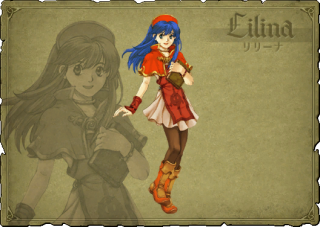
Lilina: Even though I pretended that it made me want to vomit, Lilina’s pursuits of Roy were cute in their own child-like innocent way. Lilina is probably the worst offender of the naivety I mentioned earlier, but even flaws can be interesting. From a gameplay perspective Lilina got to be pretty amazing: she never got hit, always doubled, and usually didn’t need to. Spectacular.
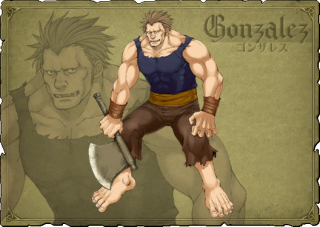
Gonzales: An ugly stupid bandit who wants to help you because you’re the only people who don’t treat him like shit. If this character were better written than he would probably be pretty great, but normally his mental shortcomings are played for comedy rather than tragedy. When it is played for tragedy the writing is pretty stilted. It's kind of hard to write a character with too much emotion with how few lines he gets. Still, making this character took some balls, so props for that. If only they made him easier to train, he becomes a respectable berserker (the only kind), but as a brigand he’s a day late and a dollar short. I found him simply unusable without arena abuse, because I simply couldn’t hit anything. Even getting through the arena battles was tough.
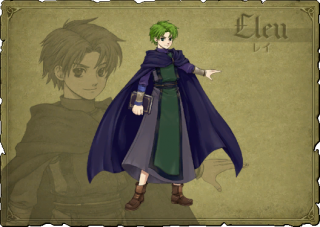
Ray: I sure would have been interested for them to delve a little deeper into what happened with Nino after the events of Blazing Sword, however that’s probably too much to ask considering that she hadn’t been invented yet. Still Ray manages to stand out because of his arrogance and rudeness, just look at that damn smirk. Also a pretty great unit, faster than a druid has any right to be.
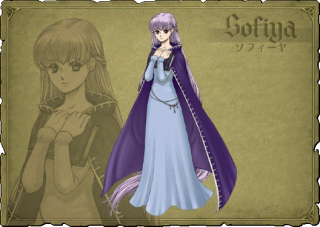
Sophia: The only female shaman I’ve ever used, I wanted desperately to like Sophia with her blend of dragon and human blood and her interesting home. However they never really explain much about her in her supports, and in addition to that she’s a terrible unit. She frequently misses, almost never doubles, doesn’t have enough magic to kill in one hit, and breaks apart at the slightest touch, and that’s with a secret book, a speed wing, and some good levels, which she only got because of some serious babying. Really just a shame. I hope they revisit the dark magic class more in the future and have some more female entries (Also with obscenely long hair.)
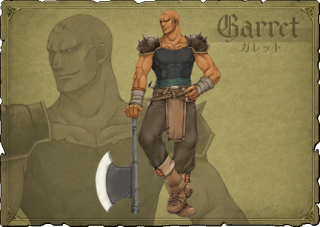
Garret: Although he’s kind of forgettable, if you delve into his supports you get to see a little dose of personality. He’s a cynical, pessimistic, person and his back story gives him every right to be. Also he has a gnarly scar and that’s dope.
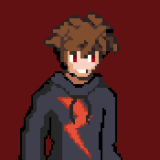
2 Comments